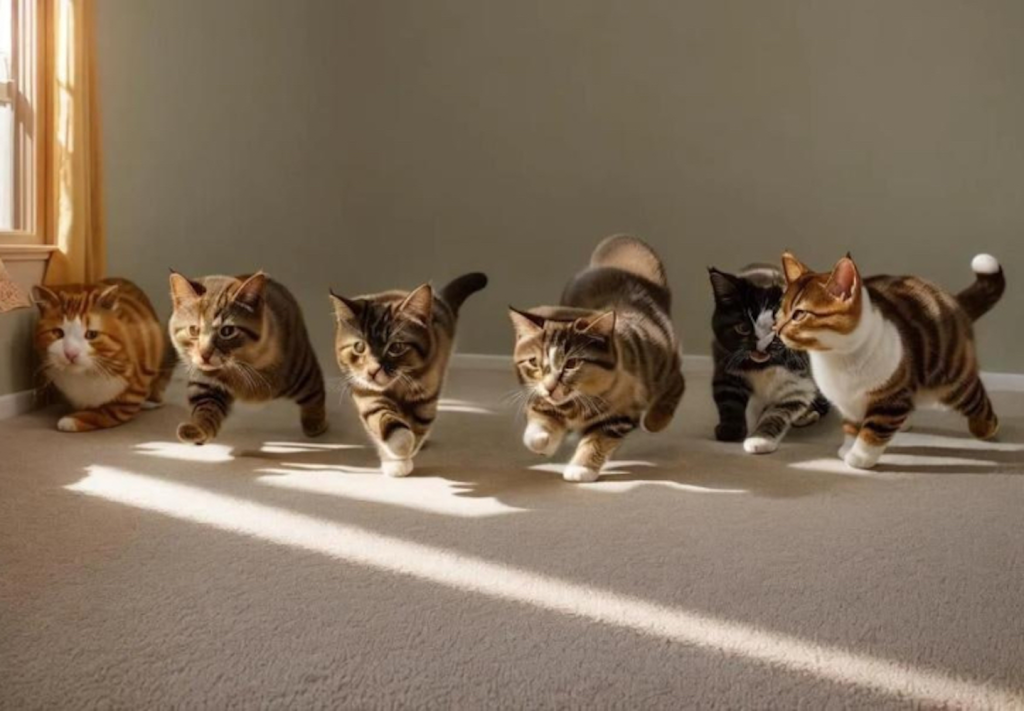Cats are some of the most photogenic animals on the planet, except for when those photos are generated by artificial intelligences. Then, the cute and cuddly creatures become creepy, nightmare cats.
Case in point is the Meow Generator, a collection of machine learning algorithms that have been unleashing thousands of disturbing cat faces on the world—15,749 of them, to be exact.
Videos by VICE
These creepy cats are the design of Alexia Jolicoeur-Martineau, a data scientist with a passion for machine learning and kitties.
“I did this to get more practical experience with deep learning, as I want to apply for a PHD next year,” Jolicoeur-Martineau told me.
Jolicoeur-Martineau began with a publicly-available dataset that contains ten thousand pictures of cats. After manually paring these pictures so just the faces of the cats could be seen, Jolicoeur-Martineau fed the photos to a generative adversarial network (GAN). GANs have been used before to great effect with projects such as MIT’s Nightmare Machine, a series of algorithms which generates monster faces and eerie landscapes.
These types of networks essentially consist of two neural networks, a type of computing architecture modeled after the human brain, that are pitted against each other. Basically, one neural networks creates an image, and the other determines if it looks right.
In this case, two algorithms are trained to recognize cat faces using the thousands of cat pictures from the database. Then one of these algorithms, called the generator, abstracts features from these photos to generate its own cat faces. These generated cat faces are then fed to the other algorithm, the discriminator, along with some pictures from the original training dataset.

The discriminator attempts to determine which images are generated cat faces and which are real cat faces. The generator then adjusts its parameters for creating cat faces based on how well the discriminator is able to tell the real and generated images apart. This back-and-forth process continues until the generator algorithm is able to produce images that are nearly indistinguishable from the real images—at least to the computer.
Then, viola. We have cats.
While this time the focus was on pink noses and pointy ears, Jolicoeur-Martineau would like to find new ways to explore other aspects of cats with deep learning in the future. “A true meow generator that generated the sounds of cats meowing would be really great, but getting clean data to do that might be hard,” she said.
The generator was able to compose some pretty decent-looking, if slightly snaggletoothed, mugshots of felines after studying the training dataset for only a few hours. But as she experimented with making cat faces in higher resolutions, and with using different types of GANs to generate them, things got weird. Real weird.
All of the freakish results can be found on Jolicoeur-Martineau’s WordPress, or you can find the code for her experiments on GitHub.




